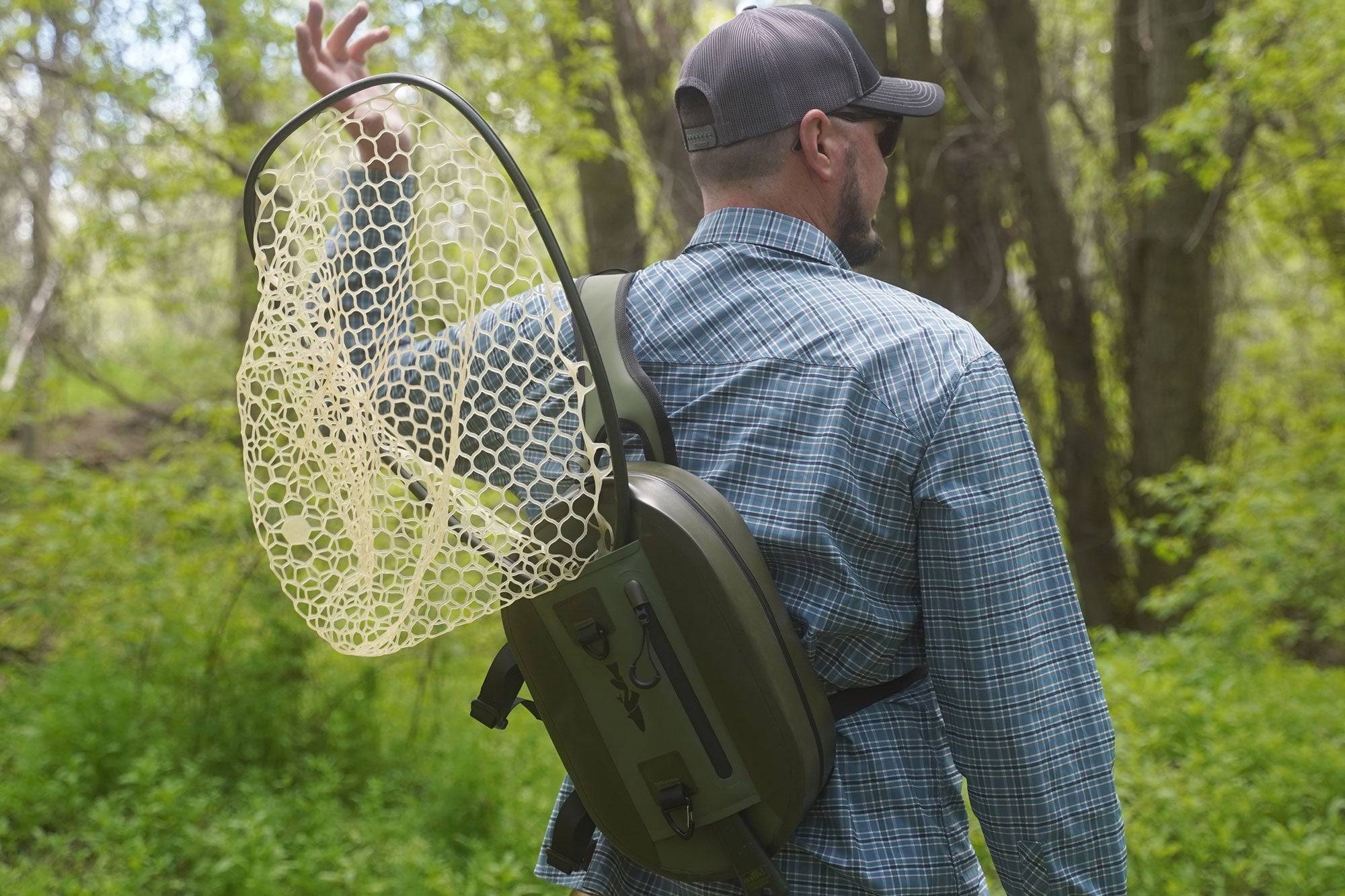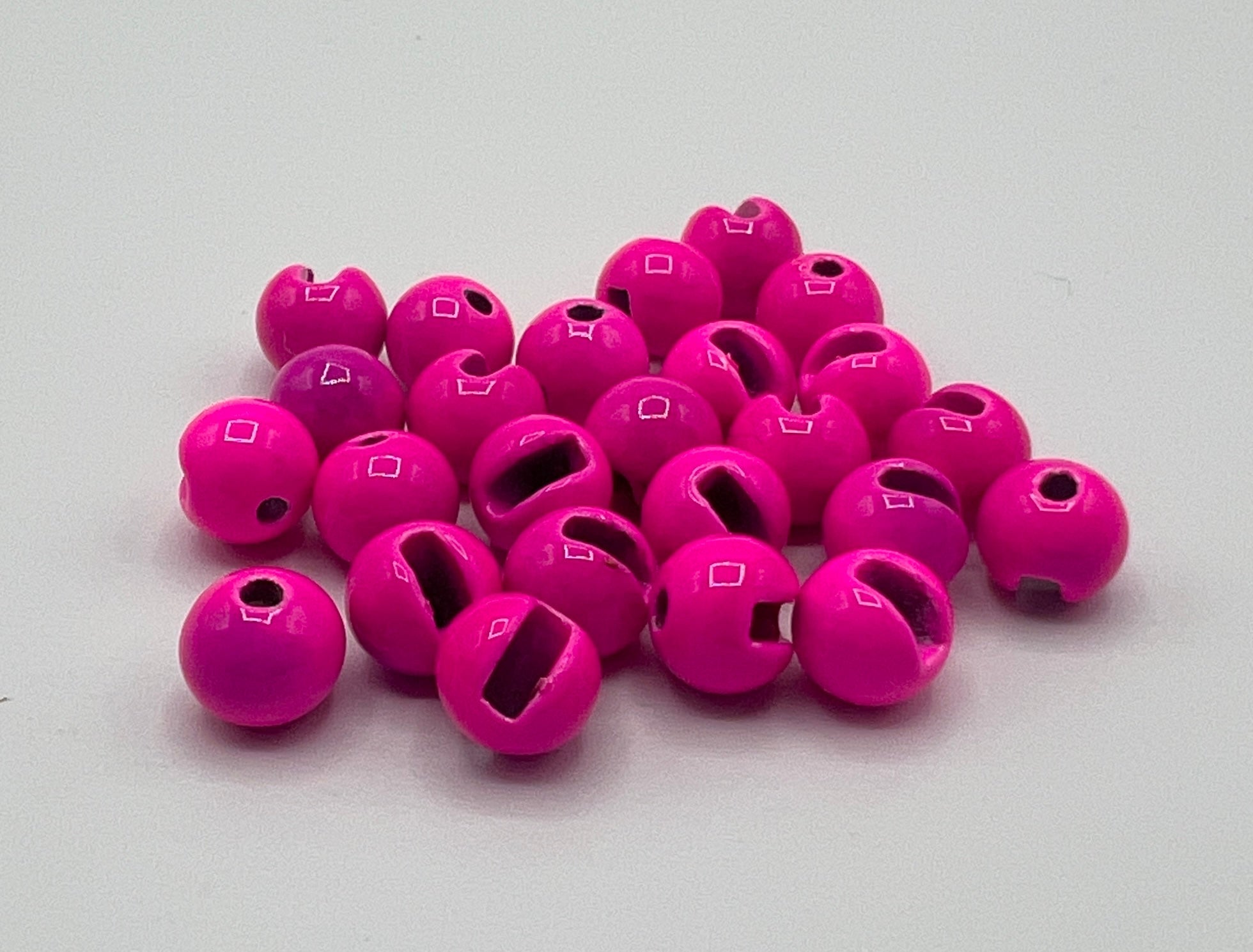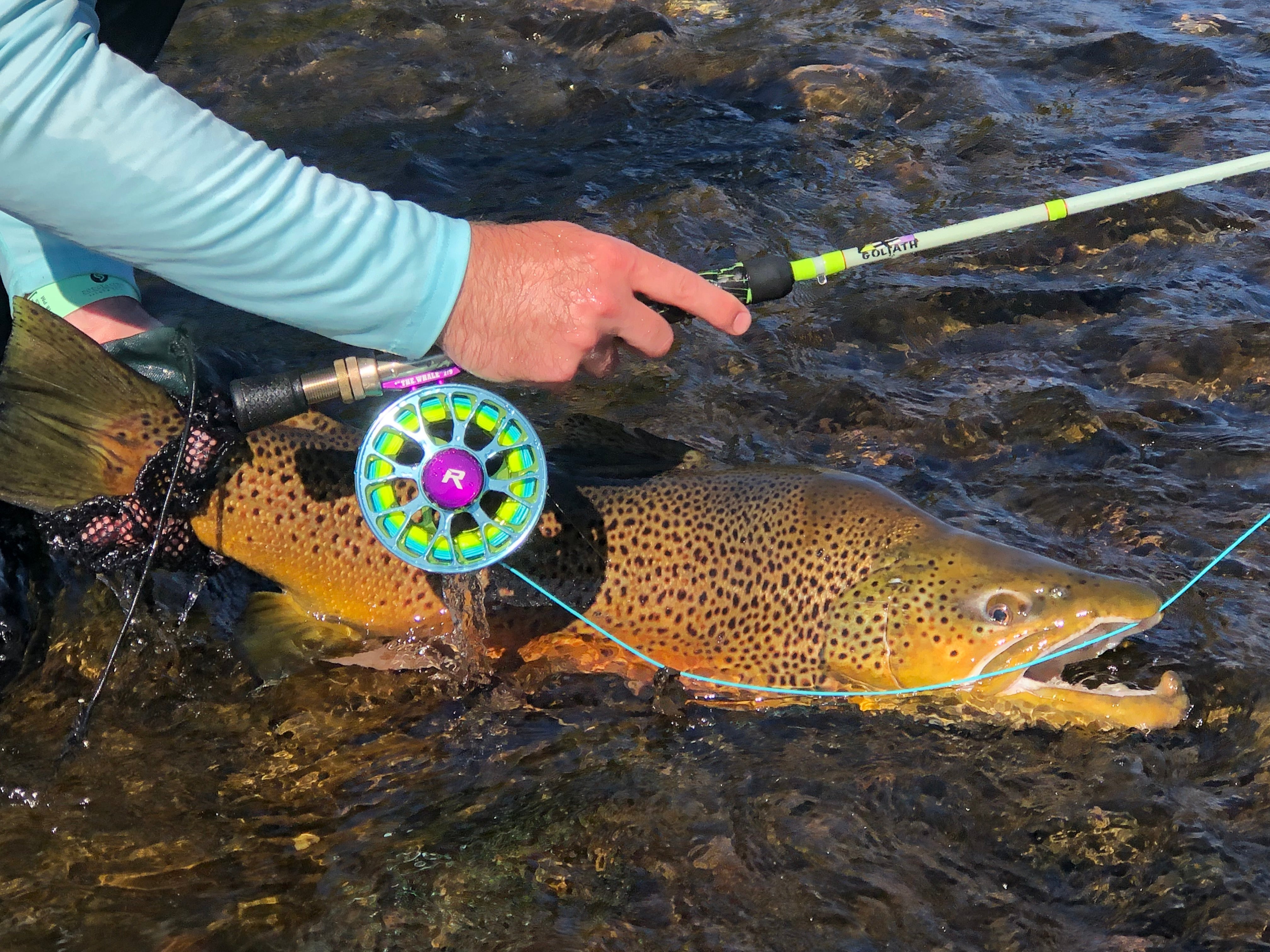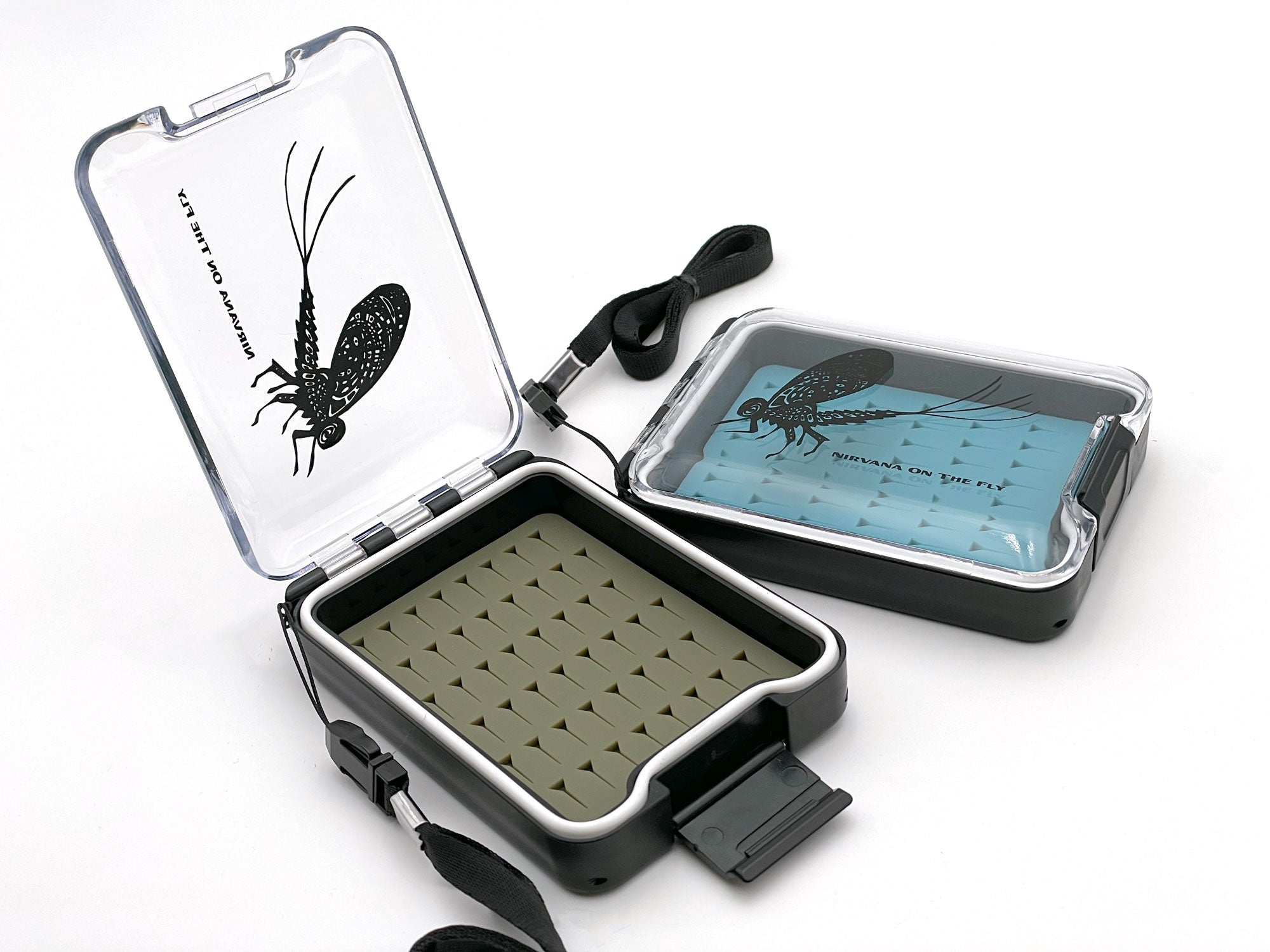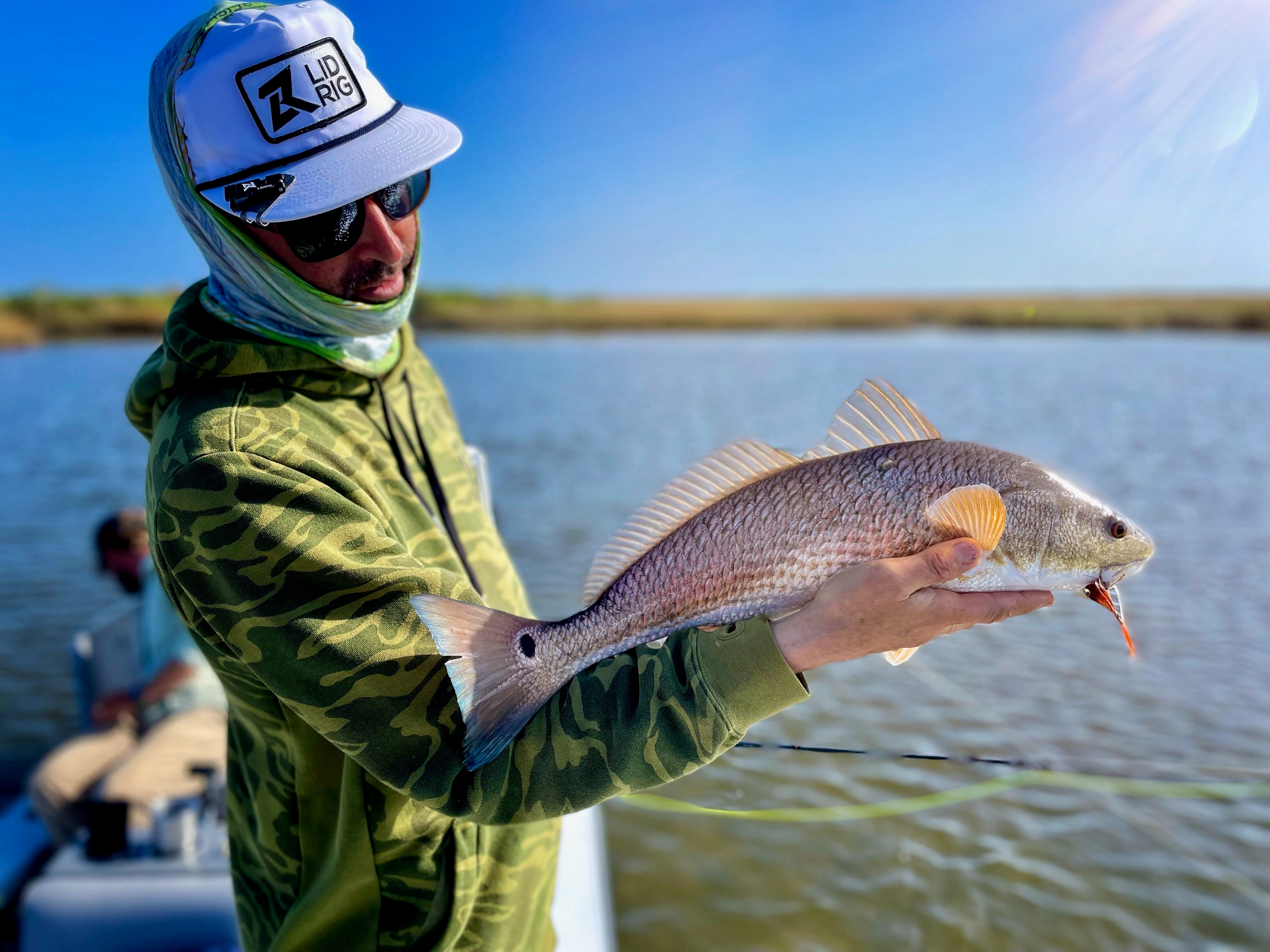Understanding Fly Fishing Lines
Floating lines are versatile and one of the more common line types anglers consider. They are especially considered by beginner anglers and at each stage it feels like you know enough more to make yourself confused. Let alone, in the past 10 years there has been more advancement in fly lines than there have been elsewhere and the line manufacturers have confused the hell out of us anglers by varying weights, grains, etc. Instead of making more confusion let’s boil the ocean per say and categorize things into a few buckets to help us make sense of all this nonsense.
First let’s discuss weight and common misconceptions. If you've been fly fishing for a while or just dipping your toes into the waters, you've probably heard about 'grain weight' when it comes to floating fly lines. There's some confusion out there, so let's reel in the facts and debunk a few misconceptions.
What is Grain Weight?
First, let's tackle what grain weight actually means. In fly fishing, grain weight refers to the weight of the fly line's first 30 feet, except for the level line. It's measured in grains - a unit of weight. To give you a perspective, there are about 440 grains in an ounce.
Grain weight is a crucial factor when understanding fly fishing lines because it has to match up with your rod's weight rating. This ensures that when you cast, the line loads the rod correctly, giving you the right amount of flex and power to present your fly effectively.
The problem is that manufactures have started overweighting lines to make the rods flex more and easier to cast. However, for years, anglers have been manually doing this so now when you ‘overline’ or move up a grain weight manually then you are really overlining because the manufacturer already did this. You can see how quickly it can get out of control.

Grain Weight Standardization
The governing body for standardizing fly line weights is the American Fly Fishing Trade Association (AFFTA). This organization provides a standardized system for understanding fly fiishing lines and weight specifications, ensuring consistency across manufacturers.
The standard set by the AFFTA uses a numbered scale to categorize fly line weights, and each number corresponds to a specific grain range for the first 30 feet of the line (excluding the level tip). This system is important because it helps anglers match their fly line to their rod's weight rating, ensuring optimal performance.
Here’s a simplified table that shows the AFFTA standards for fly line weight, the corresponding grain range for the first 30 feet of fly line, how this typically matches up with rod weight, can vary with rod action (speed), Common Uses, Line Taper, Line Density, Broad Spectrum Line Coating, and Environmental Conditions. I’ve included a number of variables to assist you in understanding grain weight and how it applies to the various characteristics of of a line and how quickly you can see this belief in a perfect line for a rod type doesn’t truly exist but is much more in line with ranges and how the feeling of the line and rod system working together is ultimately determined by and defined by the angler. Obviously, the feel of a system is different for you and I, however, there are proper feelings to perform various tasks. Long story short, understanding fly fishing lines means try multiple lines and experiment with what you are looking to accomplish. The ease of accomplishment or effectiveness of the accomplishment should be the ultimate goal.
|
Line Weight Number |
Grain Weight Range for First 30 Feet |
Typical Matching Rod Weight |
Adjustments for Rod Speed |
Common Uses |
Line Taper |
Line Density |
Line Coating |
Environmental Conditions |
|---|---|---|---|---|---|---|---|---|
|
1 |
60-74 grains |
1-weight |
Soft-action rods |
Delicate dry fly fishing, small streams |
Weight Forward (WF), Double Taper (DT) |
Floating |
Standard, Hydrophobic |
Calm, clear water |
|
2 |
75-89 grains |
2-weight |
Soft to medium-action rods |
Small trout, precise casting |
DT, WF |
Floating |
Standard, Hydrophobic |
Calm, clear water |
|
3 |
90-104 grains |
3-weight |
Medium-action rods |
Light nymphing, small to medium streams |
DT, WF |
Floating |
Standard, Hydrophobic |
Calm to moderate currents |
|
4 |
105-119 grains |
4-weight |
Medium to medium-fast rods |
Small to medium streams, dry/nymph combo |
WF, DT |
Floating |
Standard, Hydrophobic |
All-around conditions |
|
5 |
120-134 grains |
5-weight |
Medium-fast rods |
All-around trout, general freshwater |
WF |
Floating |
Standard, Enhanced slickness |
Variable conditions |
|
6 |
140-152 grains |
6-weight |
Fast-action rods |
Larger trout, small bass, light saltwater |
WF |
Floating, Sink tip |
Enhanced slickness, Durability |
Windy conditions, larger flies |
|
7 |
153-168 grains |
7-weight |
Fast-action rods |
Bass, carp, light steelhead |
WF |
Floating, Sink tip |
Durability, Tactile |
Varied, including light saltwater |
|
8 |
169-185 grains |
8-weight |
Fast to very fast rods |
Saltwater, steelhead, salmon |
WF |
Floating, Sink tip, Full sink |
Durable, Saltwater treatment |
Coastal, windy conditions |
|
9 |
186-202 grains |
9-weight |
Very fast rods |
Heavy saltwater, stripers, pike |
WF |
Floating, Sink tip, Full sink |
Saltwater treatment, Tactical |
Rough, open waters |
|
10 |
203-219 grains |
10-weight |
Very fast rods |
Big game saltwater, tarpon |
WF |
Floating, Sink tip, Full sink |
Saltwater treatment, High durability |
Tropical, heavy winds |
|
11 |
220-236 grains |
11-weight |
Extra fast rods |
Large tropical species, offshore fishing |
WF |
Floating, Sink tip, Full sink |
High durability, Tactile |
Offshore, heavy flies |
|
12 |
237-253 grains |
12-weight |
Extra fast rods |
Largest tropical species, billfish |
WF |
Floating, Sink tip, Full sink |
High durability, Saltwater |
Extreme conditions, big game |
(Note: The table above is truncated to show a range, but it goes up to 15-weight.)
These guidelines are meant to match a standard, medium-action fly rod. Here's how you might adjust the grain weight if you're using a rod with a different action type when trying to understsand fly fishing lines:
- Slow Action Rods: Might cast better with a line that is at the lower end of the grain range for the line weight or even one weight lighter. The slower reverbaration allows for what feels like a deeper bend and therefore requires slightly less weight. When understanding fly fishing lines, think of a wonderfully soft presenting dry fly rod that doesn’t whip your cast and slap your line to the water. These full flex rods will bend deeply, almost to the handle, and as mentioned are usually best with lines at the lower end of the weight spectrum for their rating.
- Medium-Action Rods: Typically stick with the AFFTA standard grain weight for the line. They are typically aiming to be right in line with the line and rod match. The action gives you a bit of both worlds. Tackling softer presentation yet powerful enough to generate line speed and cut winds. These mid flex rods flex to about the halfway point, and the standard AFFTA line weights are, again, ideal.
- Fast Action Rods: Might benefit from a line that is at the higher end of the grain range or even one weight heavier to fully load the rod for casting. When looking at boxes when understanding fly fishing lines can help tremendously. There are often small details outlining overages in grain weight. Regarding oversloading, this will generate a lot of line speed for you but takes a bit more energy and timing to accurately do so. Fast Action rods are what we consider tip flex rods that bend primarily in the top one third and can cast better with a heavier weighted line because that additional weight will cause the flex point to go deeper into the blank than the one third and generate tremendous power.
- Line Taper: This refers to the profile of the line and affects how energy is transferred during the cast. Weight Forward (WF) tapers are great for distance and wind, while Double Taper (DT) lines are more delicate and can be reversed for extended life.
- Line Density: This determines if the line floats or sinks. Floating lines are the most common, but sink tip or full sink lines can be crucial for fishing deeper waters.
- Line Coating: Coatings can be designed to repel water (hydrophobic), to enhance the slickness for easier casting, or for durability, especially in abrasive saltwater conditions. Coatings are one thing but more and more line manufacturers are now implementing textures. As you can see the list goes on and on.
- Environmental Conditions: This variable accounts for the type of waters you're fishing in—whether they're calm, windy, clear, or in the ocean. Specific lines are better suited to certain conditions, like heavier, more durable lines for windy and rough saltwater environments. Understanding fly fishing lines their coatings, tapers, grain weights, etc. is going to help you determine the impacts of environmental conditions.
Including these additional variables in the table, I’m aiming to help anglers make more informed decisions that consider not only the rod and its action but also the specific conditions they will be fishing in and the type of presentation they wish to achieve. This holistic approach to selecting a fly line can greatly enhance the fishing experience.
Noting that individual casting style and fishing conditions might lead an angler to prefer a line weight slightly lighter or heavier than the standard for a given rod. Additionally, the speed, timing, strength, and experience of an angler can have dramatic effects on how the casting performs. For example, an extremely light presentation can be performed with a fast action rod. The variables being applied here are endless. What I have found is that most anglers prefer the rod style they learned on. The muscle memory is strongest here and their ability to use the rod and line as a tool to manipulate the action to correlate to their needs is easiest for them. My tip is to practice with varying degrees of rod, line, etc. and concentrate on feeling the flex and performing the task at need. Remember, the table and the adjustments are general guidelines. The best way to find the perfect line for your rod and casting style is to test out a few different weights and see what feels best to you.
How Grain Weight Interacts with Your Rod
Imagine a dance between your fly line and your rod. The grain weight of the line leads the steps, and the rod follows. If the line is too heavy (too many grains), it can overload the rod, making it flex too much, which can cause your casting to be less accurate and feel cumbersome. On the flip side, if the line is too light, your rod won't flex enough, leading to poor casting mechanics and less power.
The key is to find a grain weight that is in harmony with your rod's weight rating. This synergy allows for smooth, efficient casts and better control over your fly's presentation. Understainding fly fishing fly lines and the various aspects discussed can maximize your efforts towards finding a line that you truly enjoy.
Common Misconceptions About Grain Weight when Understanding Fly Fishing Lines
Misconception 1: "Grain weight is the same as the rod weight."
Not quite. Rod weight indicates the weight class of the fly line that the rod is designed to cast optimally. However, understanding fly fishing lines is critical because due to personal preference and different rod actions, some anglers may choose a line with a slightly heavier or lighter grain weight.
Misconception 2: "More grain weight means longer casts."
Heavier doesn't always mean farther. While a heavier line can potentially carry more energy, if it's not matched well with the rod, it can hinder your casting distance and accuracy.
Misconception 3: "Grain weight determines the sinking rate of the line."
This is specific to sinking lines. For floating lines, the grain weight won't affect how it floats. However, the distribution of weight along the line can affect how it sits on the water and how you can mend it.
Misconception 4: "Any line weight can work on any rod."
Not recommended at all. Using a line with a grain weight not suited to your rod can make casting difficult and can even risk damaging your rod. In excess anything can be extreme and cause damage. When understanding fly fishing lines and usage with rods its important to use common sense.
Tips for Choosing the Right Grain Weight
Check Your Rod's Specifications: Start with the manufacturer's recommendations for line weight. This is your safest bet for a good match.
Consider the Rod Action: If you have a fast-action rod, it might cast better with a line that's slightly heavier than the rod's rating. Conversely, a slow-action rod might benefit from a lighter line.
Try Before You Buy: If possible, cast a few different lines with your rod to see which feels the best to you. Many fly shops will allow you to test lines on the water.
Read Reviews and Ask Around: Leverage the experience of others and how they understand fly fishing lines is a good strategy. Just remember that not everyone understands it so listen but do your own research and ask lots of questions. Reviews, forums, and local fishing clubs can provide invaluable insight into what grain weight might work best for you.
Final Grain Weight Selection
Selecting the right grain weight for your fly line is more art than science. It's a personal choice that affects your casting rhythm and your overall fishing experience. Don't let misconceptions throw you off the scent. With the right knowledge and a little trial and error, you'll find the perfect match to keep your fly fishing both effective and enjoyable. It’s your rod, your feelings and your goals that determine the correct setup. It however is important to practice both extremes so you can understand what feels best for you and what you wish to accomplish.
Now that you have grain weight understood, you need to dive into the types of floating lines and there are characteristics here that should be considered and taking into account for variability.
When considering floating lines there are mainly two things to think about: the type and the material.
Types of Floating Fly Lines:
- Weight Forward (WF): This type is heavier at the front end, which means it can shoot out further and easier, kind of like a slingshot. It's good if you want to cast far away or if the wind is blowing. As a beginner, this is the easiest to use for casting to a location. It has the disadvantage of being a faster and heavier line to the location which can lead to a heavier presentation but you can slow that down with your cast types. It is considered the easiest to cast so I think it is the best choice for a beginner to start with.
- Double Taper (DT): This line is like a twin – it's even on both ends and gets thinner in the middle. It's nice for gentle casting when you don't need to throw your line too far, and you can flip it around when one end gets worn out.
- Level (L): This line is the same thickness all the way along, kind of like a straight road. It's the simplest and cheapest, but it's not as fancy or easy to cast as the other types.

Materials for Floating Fly Lines:
- PVC (Polyvinyl Chloride) with Additives: This is the most common material. It's like a plastic, but it's mixed with special ingredients that help it float better and stay flexible.
- Polyurethane: This material is tougher and can handle different kinds of weather – hot or cold, it doesn't matter much. It's like wearing a jacket that's good for all seasons.
- PVC-Free Lines: Some lines skip the PVC and use different materials that are kinder to the environment. They still work well but can be a bit more expensive.
I’m assuming that you are more confused now than you ever have been about choosing the line you need. Here is my advices. Look at the rod and its speed and action. Observe the grain weight table and understand where you should be within the range that is defined. Then ask yourself if you are looking to achieve longer casts or normal casting lengths. Once determined observe your coatings and textures along with environmental concerns. Then look to find a line with a company you respect and has the preferred materials you would like to use. Lastly, you review all, choose the type of line that suites your goals, re-review the line weights and select the line. Use that line and see how it goes. When doing this I highly suggest writing it all down in your own table with notes to determine what you want. Review it, ask questions of a professional and go for it. Each line will teach you something and with the general guidelines you’ve picked up here you’ll have no problem selecting a line that you will be proud of and have a far greater understanding of of the system you built. Don’t forget that it isn’t the line or the rod etc. and that it is you and your casting ability. Each time you get a line continue to practice and perfect your cast. A good cast will help you far more than a rod or line.

By Christian Bacasa
Host of the Fly Fishing Insider Podcast
www.ffipodcast.com
@flyfishinginsiderpodcast
@dupeafish


